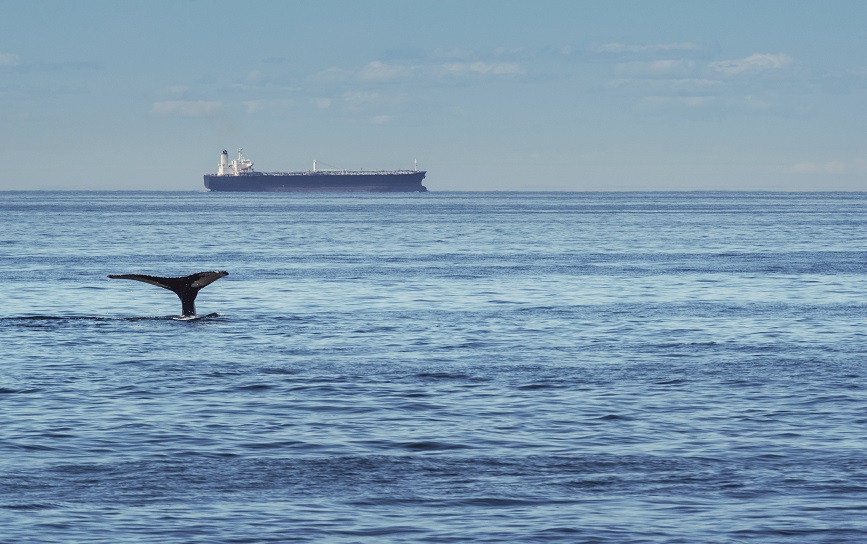The Channel Islands off the coast of Santa Barbara provide an important migratory corridor and feeding ground for gray, blue, fin, and humpback whales. Each year, thousands of endangered whales pass through the islands as they make their annual migrations north to feed, then south again to warmer breeding waters.
The Santa Barbara channel is also frequented year-round by thousands of commercial shipping vessels headed for the busy container ports of Long Beach and Los Angeles, where $100 billion of imports and exports are transported each year. Maritime traffic is vital to California’s economy, but it can be fatal for marine mammals, killing several endangered whales each year.
After 15 years of tracking satellite-tagged blue whales, researchers concluded that many of the whale fatalities were the result of collisions with cargo ships. In response, marine conservationists teamed up with the maritime industry to strike a deal. To minimize whale fatalities, ships needed to slow down as they passed through the whales’ feeding grounds.
But instead of lobbying for regulatory restrictions on shipping vessels, the conservationists opted for a different approach: simply pay cargo ships to slow down. From July through October, when the blue whales are most abundant, shipping lines are paid $2,500 per trip if their ships travel at a speed of 12 knots or slower through the channel. Although the slower speed adds about four hours to a typical voyage, maritime industry groups are supporting the pilot program.
The initiative, funded by the Santa Barbara Foundation and the Santa Barbara County Air Pollution Control District, does more than reduce the risk of whale injuries. It also reduces the emissions released by offshore vessels, improving air quality for coastal communities downwind of the shipping lanes. This is significant because ships speeding through the Santa Barbara Channel account for more than 50 percent of the area’s nitrogen oxides, the component of smog most damaging to lungs.
Ships can resume faster speeds during the offseason. But for a few months each year, the environment will win twice over. Not only will endangered whales be safer, but emissions from cargo ships will be greatly reduced.
Further Reading:
Science: “Blue whales being struck by ships“
LA Times: “Cargo ship plan aims to protect whales, air quality off Santa Barbara“




